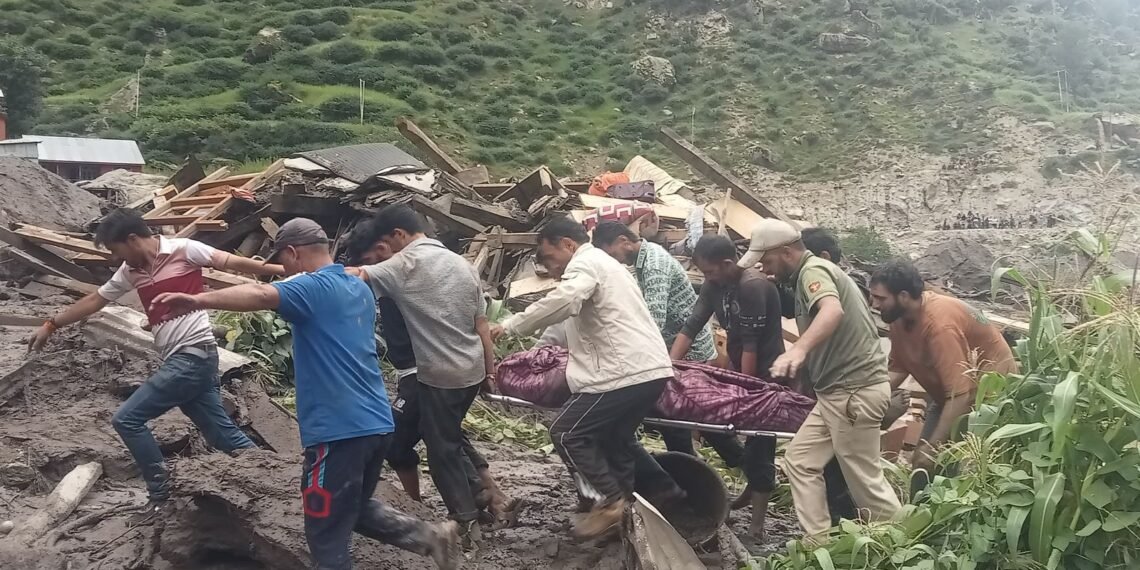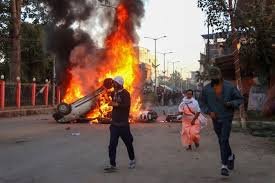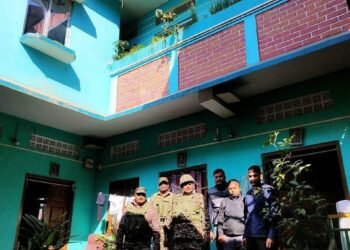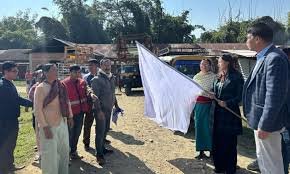Rescue efforts, led by the Army, NDRF, SDRF, Police, BRO, and locals, continue in high-altitude terrain with specialized equipment, dog squads, and earthmovers deployed.
BY PC Bureau
New Delhi, August 16: Three days after a devastating cloudburst and flash floods struck the remote heights of Chisoti village in Jammu and Kashmir’s Kishtwar district, the scale of destruction continues to unfold. At least 60 people have been confirmed dead, more than 100 have been injured, and 75 remain missing, even as rescue teams battle against time and terrain to save lives.
The disaster hit at 12:25 pm on August 14, when a sudden rush of water and boulders thundered down from the mountains, flattening everything in their path. The torrent swept away a makeshift market, a langar (community kitchen) serving pilgrims of the Machail Mata yatra, and even a security outpost manned by police personnel.
The impact was catastrophic:
- 16 residential houses and government buildings reduced to rubble
- Three temples destroyed
- Four traditional water mills washed away
- A 30-meter bridge snapped in half
- More than a dozen vehicles mangled beyond recognition
Locals describe scenes of horror—families torn apart, pilgrims washed away, and entire stretches of the once-bustling yatra route now resembling a wasteland of mud, logs, and broken stone.
Rescue Operations in High-Altitude Terrain
Despite the enormity of the tragedy, the response has been swift. Teams from the Army, J&K Police, CRPF, NDRF, SDRF, BRO, and the civil administration have been working shoulder to shoulder with local volunteers in the treacherous terrain.
Specialized equipment, dozen-odd earthmovers, and dog squads have been pressed into service to clear debris and search for survivors. Yet, the high-altitude location, narrow roads, and unstable slopes continue to slow down progress.
Union Minister Jitendra Singh, who reached the site late Friday night after an arduous uphill drive, acknowledged the challenges.
Kishtwar Cloudburst: 60 Dead, Dozens Missing as Rescue Operations Continue pic.twitter.com/pPME8aQihT
— Basit Zargar (باسط) (@basiitzargar) August 16, 2025
“After a long, tedious drive, managed to reach the site of the cloudburst disaster in Kishtwar… very late, around midnight,” he posted on social media. He was accompanied by DGP Nalin Prabhat and senior officials who briefed him on the ground situation.
So far, 46 bodies have been identified and handed over to their families after legal formalities. Among the dead are two CISF personnel deployed for security duties and a Special Police Officer (SPO) from the local police.
But families of the missing fear the true toll could be far higher. “My cousin and his entire family of five were near the langar site. There is no trace of them,” said one villager, pointing to the boulder-strewn ground where hundreds are believed to be buried.
Officials confirmed that 75 missing persons have been formally reported, but eyewitnesses and survivors believe the number of victims could run into the hundreds.
READ: Six Killed as Dargah Roof Collapses Inside Humayun’s Tomb Complex
The annual Machail Mata yatra, which draws thousands of devotees each year, has been suspended for the third consecutive day. The 8.5-km trek from Chisoti to the shrine at 9,500 feet—a journey of faith and endurance—has now been transformed into a trail of grief.
The yatra, which began on July 25 and was slated to conclude on September 5, is unlikely to resume anytime soon, with the entire route damaged and security arrangements shattered.
The tragedy has cast a shadow across Jammu and Kashmir. Political leaders, civil society groups, and religious organisations have extended condolences and appealed for urgent aid. Relief camps have been set up nearby, with food, medicines, and temporary shelters being provided to survivors who have lost their homes.
READ: New Bharat: Savarkar Towers Over Bapu, Bhagat Singh and Netaji
Yet, amid the devastation, stories of resilience emerge. Locals were the first to dig through the rubble with bare hands, pulling out survivors even before professional rescue teams arrived. “We will not give up until we find them all,” said a volunteer, his face smeared with mud and exhaustion.
With roads damaged, bridges swept away, and infrastructure crippled, restoring normalcy in Kishtwar will be a long and painful process. Officials admit that clearing debris and rebuilding homes will take weeks, if not months.
For now, the focus remains on locating the missing, identifying the dead, and providing relief to the injured. As one Army officer on the ground put it, “Every passing hour reduces the chances of finding survivors, but we will not stop searching. Even one life saved is worth the effort.”
.












